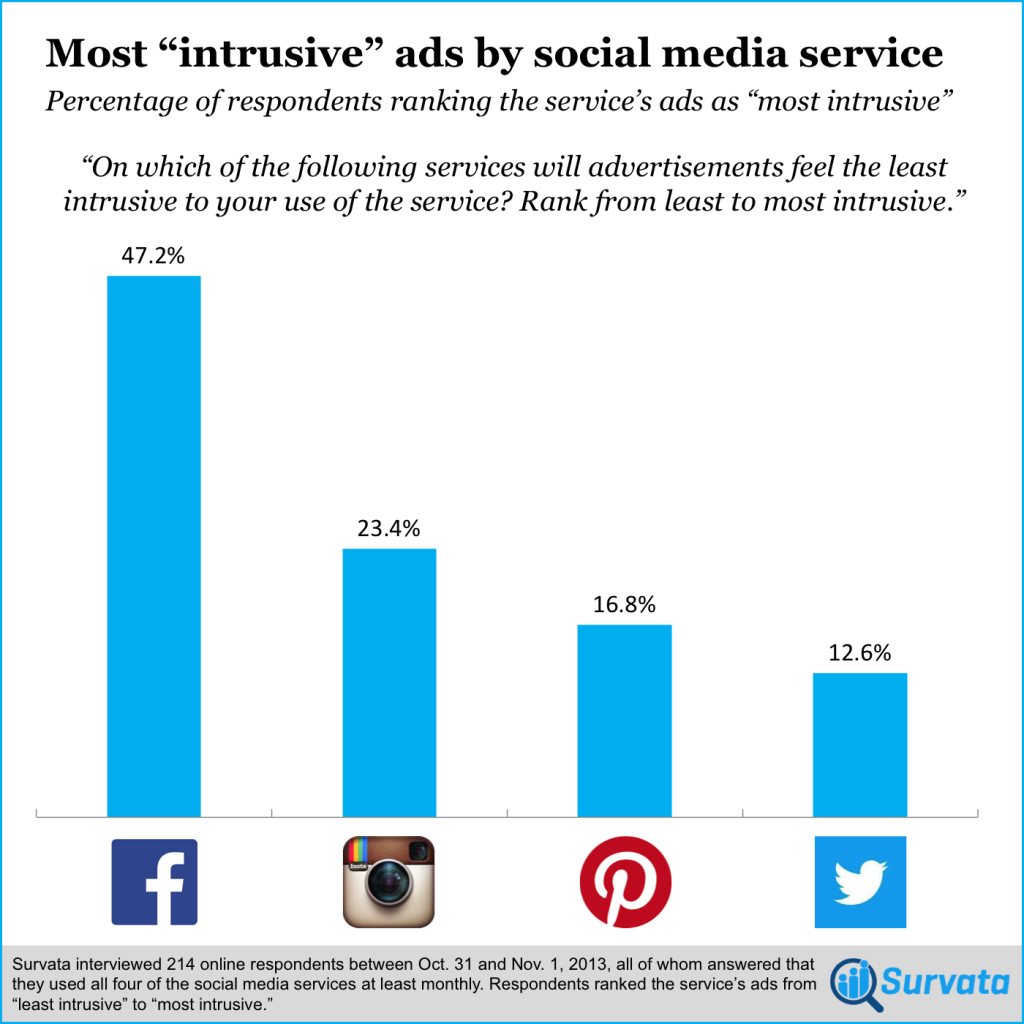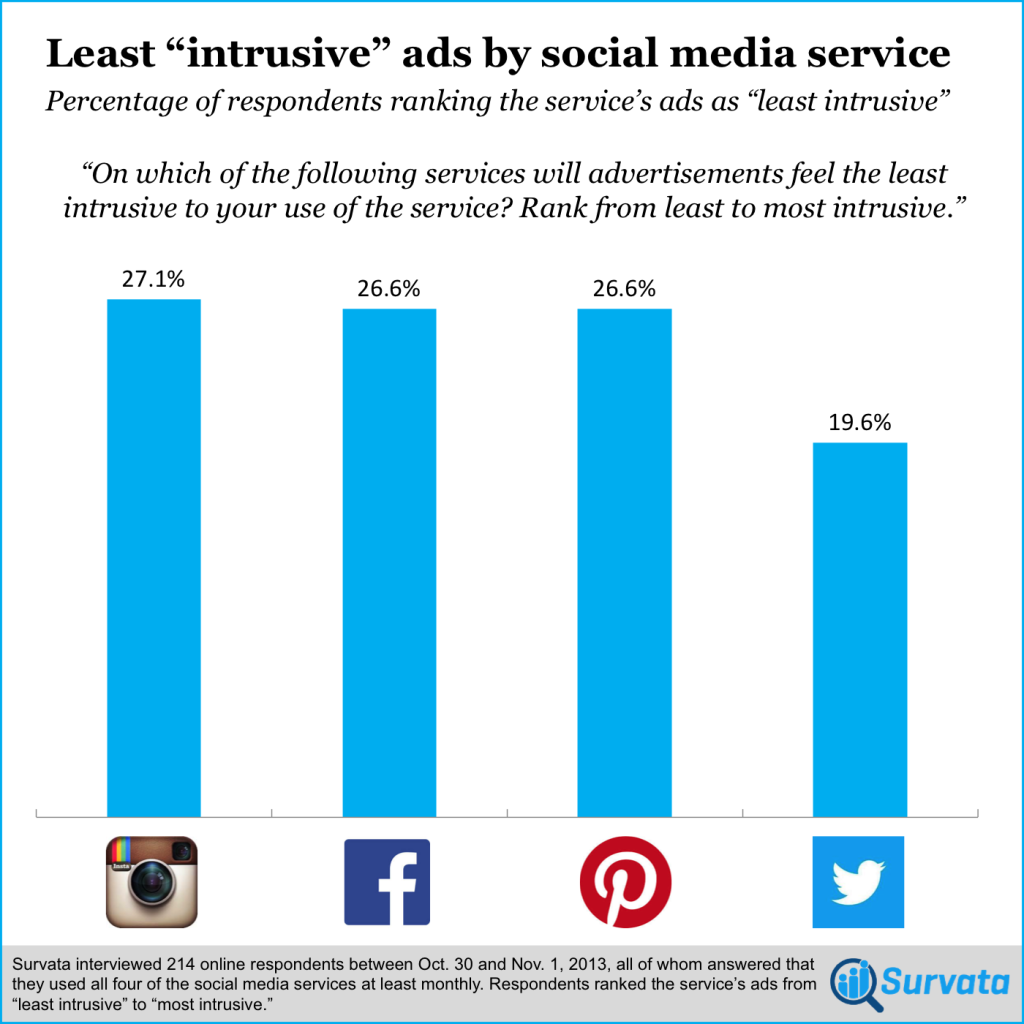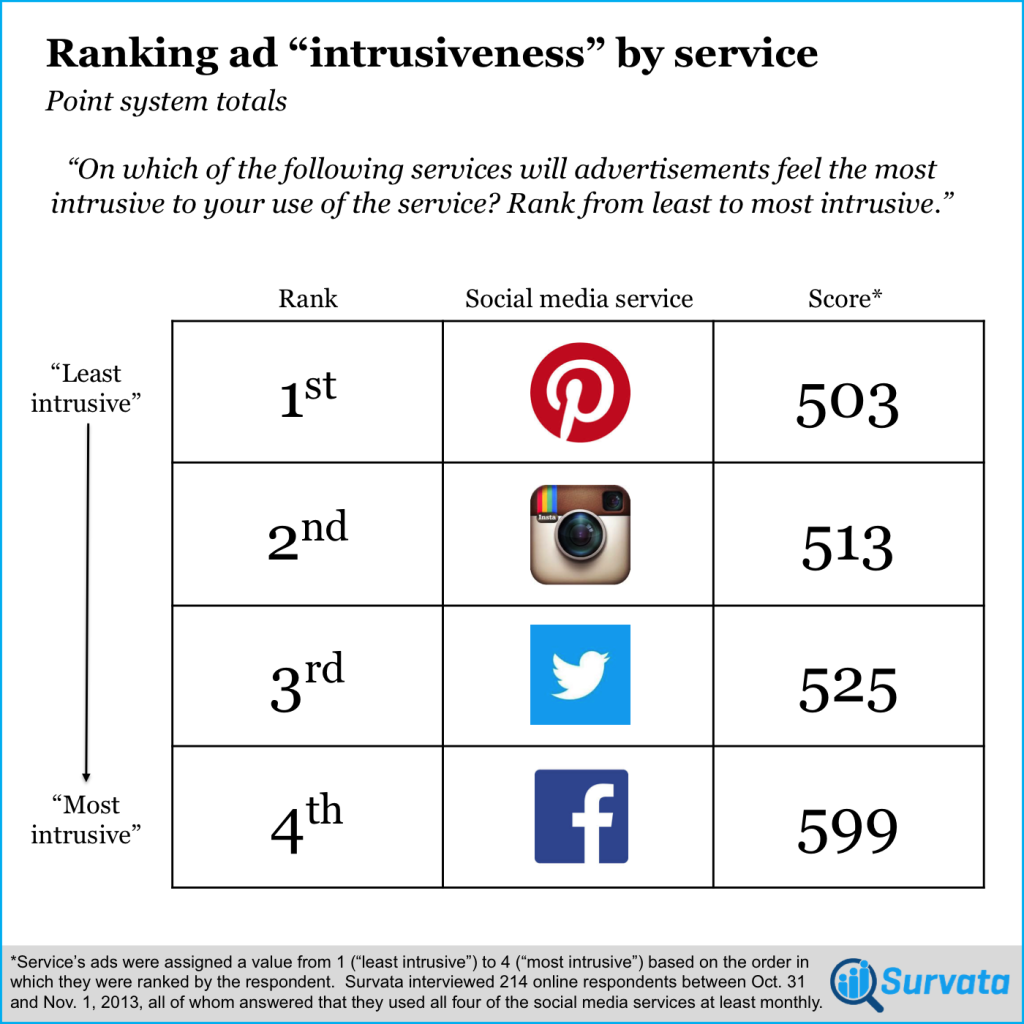With Twitter’s IPO and Instagram announcing ads, it seems like every social network is thinking about revenue. As James Whatley says in an article in the marketing magazine, The Drum,
social networks “need their users to have data to sell and need brand advertising dollars to keep the lights on and (whisper it) actually make some money.”
Inserting ads into a previously ad-free product, though, is dicey. Will users accept the corporate intrusion into this very personal space? Will usage start to falter?
To help us look at this question, we asked our friends over at Survata to run a survey for us. They asked online respondents to rank advertisements on social networks from least to most intrusive to the respondents’ use of the service.

Facebook ads were clearly seen as most intrusive. Facebook is also years ahead of the other networks in monetizing its users, which is likely a significant factor in user perceptions.

Instagram ads are currently seen as least intrusive. This makes sense—Instagram is still in the process of rolling out ads. There isn’t anything to click on, so ads scroll by much like in a magazine. Instead of standing out from the content, they become a part of it. This is great for branding and for user experience, although we have a hard time imagining that they won’t eventually release clickable ads. This is, after all, the internet.
Interestingly, Twitter was at the bottom of both the most intrusive and least intrusive list. Apparently, users consistently find Twitter ads only moderately intrusive. Since Twitter’s ad mechanisms very clearly lend themselves to measurable call-to-actions, this puts Twitter in a good position for growing their advertising revenue. With the newly released video and picture ads, it will be interesting to see if this trend continues.
Real-time sharing is what made Twitter as valuable as it is right now. With more multimedia ads, it’s interesting to note that they’re making money in the same way that a traditional media outlet would—by promoting non-real-time ads from major brands. Will this continue to be the case? Is there such a thing as “real-time ads”?

Looking at the survey results again, when we assign a value to each platform based on the order in which respondents ranked them, a different picture emerges. The un-social social network, as Pinterest sees itself, ranks least intrusive. Pinterest seems like a social network because users are sharing, pinning and commenting. However, it operates more like a search and discovery platform, similar to Google. It makes sense that users wouldn’t mind seeing advertising on Pinterest—they’ve already been conditioned by Google to expect it.
Pinterest users expect advertising because they are searching for content, not creating it. This is where Pinterest has an edge on its IPO-loving friends. It seems silly not to display an ad for a product after a user has searched for it.
At RJMetrics, we help marketers figure out how to to allocate their budgets between ad platforms. What’s most interesting to us about the developments in social advertising is how advertisers will measure the success of these new ads.
Facebook has historically shown that it can operate without regard for annoying its users and will continue to be a dominant force in social advertising even if users think its are intrusive. Instagram ads are poised to be the most creative and engaging, but will continue to be dominated by brand marketers until they start including links.
Twitter is positioning itself well to compete for major advertising dollars, both from brand marketers and direct marketers. And its users don’t seem to mind (too much).
